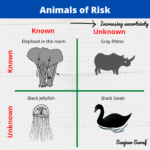Reactivity hazards involve conversion of stored chemical energy of the components into mechanical or heat energy, andit is the uncontrolled release of this stored energy that causes the damage in a reactive chemical incident. The reactivity of a substance is normally assessed by performing calorimetric measurements.
Information about the amount of energy released and the rate of energy released for a process chemical can be obtained by performing calorimetric tests. A small amount of the sample is heated over a range of temperature (usually within 30 °C – 400 °C), and temperature, pressure, and time data are recorded. This information is then used for alarm settings, relief sizing, and process modeling. Overall thermodynamics and kinetics of a reaction can be estimated from temperature-time data obtained from a calorimeter, and this information is used to identify the material hazards posed by a composition and risk of potential runaway reactions.
Typically, Differential Scanning Calorimeter (DSC) tests are run to screen chemical because DSC tests are relatively inexpensive and can be performed quickly. Detailed testing can be performed using other calorimeters such as the Automated Pressure Tracking Adiabatic Calorimeter (APTAC) from TIAX or the Vent Sizing Package (VSP) from Fauske and Associates.
Following are a few important parameters obtained from calorimetric analysis:
1. Heat of reaction (?Hrxn): Energy released during the reaction
2. Onset Temperature (To): Temperature at which reaction is initiated. Based on sensitivity of the calorimeter to detect “significant” reaction
3. dT/dt: Rate of temperature increase
4. dP/dt: Rate of pressure increase
How can you use the above information to tell if the composition tested is explosive? I’m going to give you a simple formula; however, if you want to learn advanced techniques please contact me.
To identify explosive compositions we will define a new term – Explosion Potential (EP). Yoshida (1987) proposed the following correlation for DSC results:
EP = log (DH) – 0.38 log (To-25) – 1.67
where DH is heat of reaction and To is the onset temperature.
Compositions with EP > 0 are considered to be potentially explosive.
The above equation by no means is applicable 100% of the times and if you want to learn advanced techniques to analyze reactivity hazards please contact me.






2 Responses
How can I get the primary Yoshida reference to which you refer above?
Thank you.
LJW
Larry…I will have to dig up my records. Please give me a few days.